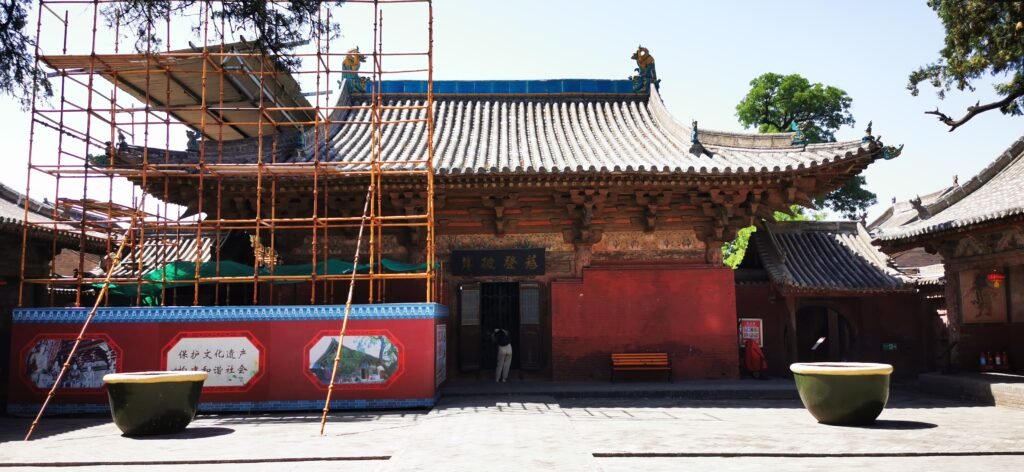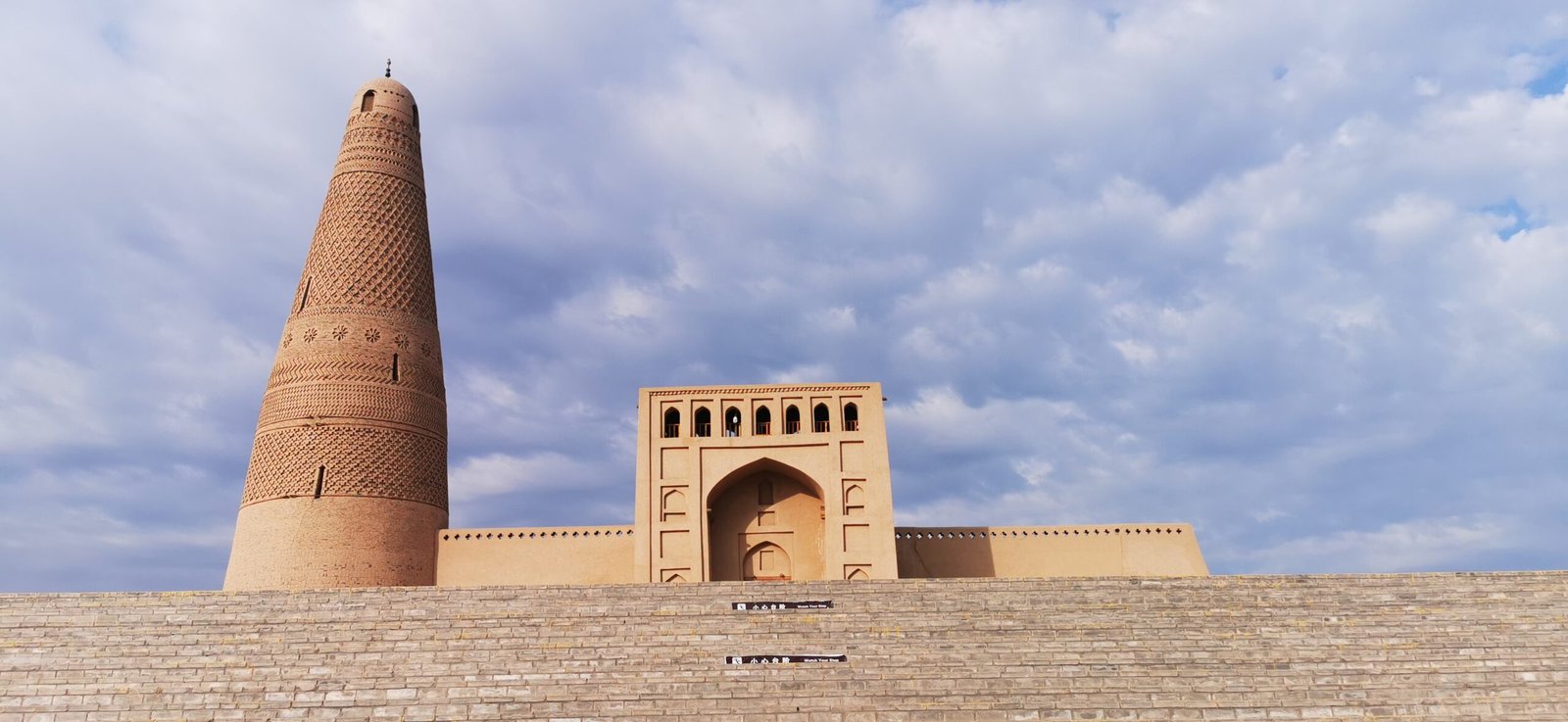Among the diverse styles of traditional Chinese roof architecture, the Xuan Shan roof stands out as the most widely used form in the southern regions of China. Known for its elegant silhouette and practical functionality, this roof style exemplifies how traditional Chinese design harmonizes with regional climate, cultural aesthetics, and structural ingenuity.
In this article, we’ll explore the Xuan Shan roof in detail: its structure, regional significance, comparison with other Chinese roofs like the Wu Dian roof and Xie Shan roof, and its close relationship with the Chinese wooden structure system. We’ll also analyze its weather adaptability and enduring popularity in southern Chinese traditional architecture.
What is a Xuan Shan Roof?
The Xuan Shan roof (悬山顶), often translated as a Chinese gable roof, is characterized by two large sloping roof planes with gable ends (山墙) on the shorter sides. Unlike the Wu Dian roof, which features four sloping sides meeting at a central ridge, or the Xie Shan roof, which combines hip and gable elements, the Xuan Shan roof maintains a simpler yet highly effective gable form.
The term “Xuan Shan” literally means “suspended mountain,” referring to the pronounced overhanging eaves that extend far beyond the walls. These overhangs serve both decorative and practical purposes—casting shade in the subtropical heat and deflecting the heavy rainfall typical of southern China.

Key Features of the Xuan Shan Roof
- Two sloped planes with vertical gable walls
- Extended eaves for rain protection
- Simple beam and purlin structure based on Chinese wooden construction
- Adaptability for residential, religious, and institutional buildings
This roof style is most often found in traditional southern Chinese houses, ancestral halls, and Buddhist temples.
Adapting to the Southern Climate
Southern China is known for its humid, rainy climate with heavy monsoon seasons. The Xuan Shan roof is a direct response to this environmental condition. The steep slopes allow rainwater to drain quickly, minimizing leakage and reducing water damage to the wooden structure underneath.
The extended eaves, sometimes reaching nearly a meter or more, are particularly suited to sheltering walls, windows, and foundation stones from the persistent rain. This feature also enables natural ventilation, which is crucial in the humid regions where mold and mildew can quickly degrade construction materials.
By comparison, roofs in northern China—such as the Wu Dian roof, which is more symmetrical and compact—prioritize insulation and resistance to snow, while the southern Xuan Shan roof prioritizes airflow and drainage.
Integration with Chinese Wooden Structure
The Xuan Shan roof is inseparable from the Chinese wooden structure tradition. It relies on a system of beams (梁), purlins (檩), and rafters (椽) that support the sloping planes of the roof. This system, often enhanced with dougong (斗拱) brackets in more sophisticated buildings, ensures stability and resilience, even without nails.
Because the roof is lighter than more elaborate styles like the Xie Shan or Wu Dian roofs, it allows for faster and more economical construction. This made it an ideal choice for everyday residences and smaller public structures across southern provinces such as Guangdong, Fujian, and Jiangxi.
Connection to Traditional Houses
The Xuan Shan roof is a defining feature of many southern Chinese traditional homes, including Hakka tulou and Lingnan courtyard houses. It fits seamlessly into regional aesthetics, particularly when combined with whitewashed walls, grey tiles, and carved wooden eaves—features commonly seen in southern Chinese architecture.
To explore more about how traditional Chinese homes are structured, visit our article: How a carpenter constructs the frame of traditional Chinese house
Comparison with Other Chinese Roof Styles
Xuan Shan Roof vs Wu Dian Roof
The Wu Dian roof, or five-ridge roof, is regarded as the most prestigious style in Chinese traditional architecture. It is commonly used for palaces, important temples, and official buildings. Structurally, it is more complex and visually imposing than the Xuan Shan roof.
While the Wu Dian roof emphasizes symmetry and grandeur, the Xuan Shan roof prioritizes practicality and regional climate adaptability. For more on the highest-ranking roof style, see: Wu Dian roof – the highest ranking of Chinese roof

Xuan Shan Roof vs Xie Shan Roof
The Xie Shan roof combines features of gable and hip roofs. It is often used in temples and official residences, offering a balance between function and ceremonial significance. However, it is more expensive and structurally demanding than the Xuan Shan type.
In contrast, the Xuan Shan roof is straightforward to construct and repair, making it ideal for the needs of everyday architecture, particularly in southern China’s dense rainfall environment.

Use in Buddhist and Folk Architecture
Although the Xuan Shan roof is most common in residential architecture, it also appears in Buddhist caves and temple architecture, particularly in southern regions where elaborate eaves are needed to protect sacred spaces from rain.
Its clean, sloped design offers a natural frame for decorated gables or ridge tiles featuring auspicious symbols—dragons, phoenixes, or lotuses—which are commonly seen in grotto art and temple decorations.
For readers interested in the spiritual side of traditional Chinese architecture, check out: Yungang Grottoes in China – the start of Buddhism boom
Modern Relevance and Revival
Today, the Xuan Shan roof remains a beloved element in the restoration and reconstruction of Chinese traditional houses. Architects and heritage builders in the south continue to use its classic design in both historical preservation and modern adaptations, blending ancient elegance with contemporary functionality.
In eco-conscious construction, the principles of roof overhang, natural ventilation, and rainwater management—all embedded in the Xuan Shan roof—are being revisited for sustainable design solutions.
Conclusion
The Xuan Shan roof is more than just a functional cover—it is a regional response to climate, a manifestation of Chinese aesthetics, and a cornerstone of Chinese gable roof architecture in the south. Its widespread use and adaptability have made it the most common roof style in southern China, representing the perfect union of practicality and beauty in Chinese roof design.
Whether as part of a humble farmhouse or a revered ancestral hall, the Xuan Shan roof reflects the enduring legacy of Chinese traditional architecture, standing strong through centuries of rain, wind, and cultural change.

